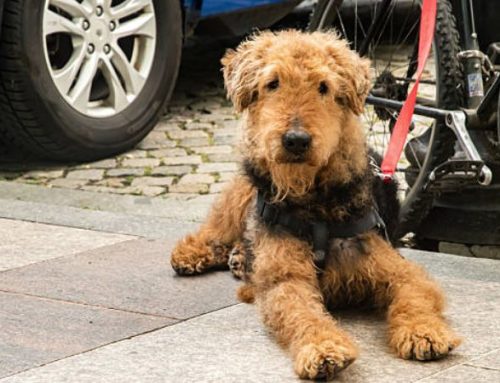With their quirky charm and fearless personalities, Kinkalow cats don’t let their petite legs slow them down one bit. These spirited little felines are just as likely to chase a feather wand across the room as they are to launch themselves onto a countertop for a better view of the action.
In this guide from Nexus Pets, we’ll explore everything that makes the Kinkalow so captivating—from their breed background and kitten appeal to what you can expect to pay if you’re hoping to bring one home.
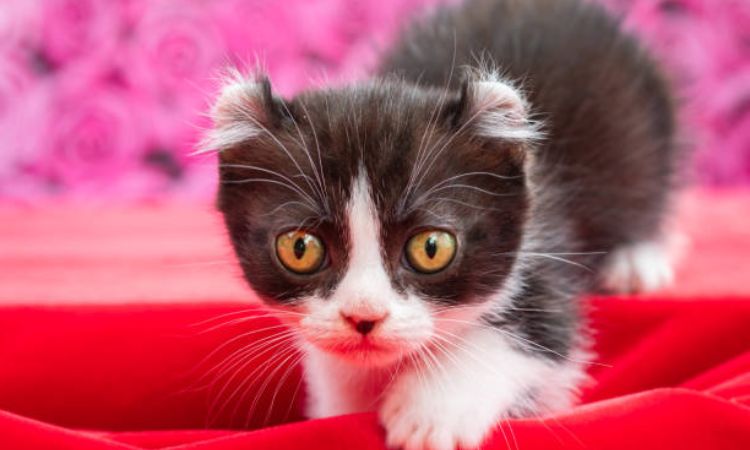
Introduction to the Kinkalow Cat Breed
The Kinkalow is one of the most unique and charming cat breeds to emerge in recent decades. Created in the United States in the mid-1990s, this rare dwarf breed is the result of crossing two distinctive parents: the Munchkin, known for its short legs, and the American Curl, famous for its backward-curving ears. The goal was to produce a cat that combined both standout traits—and that’s exactly what the Kinkalow delivers.
Because the breed is still being developed and refined, The International Cat Association (TICA) currently recognizes the Kinkalow under Experimental Breed Status. Their scarcity, unusual appearance, and sweet temperament make them especially intriguing to cat enthusiasts who appreciate something out of the ordinary. Small in size but big in personality, Kinkalows embody a playful, affectionate, and curious spirit that fits effortlessly into family life.
Kinkalow Cat Physical Characteristics & Appearance
1. Size and Build
Kinkalows are a small, compact, and low-to-the-ground breed, immediately recognizable by their diminutive stature. Despite their short legs, their bodies often appear elongated and slender, giving them a graceful yet playful look.
Adult Kinkalows typically weigh between 3 and 7 pounds (1.8–3.2 kg) and stand around 6–8 inches tall. Their low, sturdy build combined with a slightly elongated torso makes them appear both agile and endearing almost like a kitten that never grows up.
2. Distinctive Features
Short Legs: One of the most defining traits of the Kinkalow, inherited from the Munchkin parent breed. Their short limbs give them a dwarf-like appearance while maintaining strong mobility for running, climbing, and playful antics.
Curled Ears: Derived from the American Curl, their ears gently curl backward in a smooth, elegant arc. Kinkalow kittens are born with straight ears, which gradually curl over the first few weeks of life, typically finishing by around five months of age. The curl is subtle, adding to their signature “forever kitten” expression while maintaining flexibility to avoid ear injury.
Tail: The Kinkalow often sports a long, proportionate tail that can be as long as or sometimes longer than the body. This tail contributes to their balance and accentuates their slender, agile silhouette.
3. Coat and Color
Kinkalows display versatility in coat length and pattern:
- Coat Length: Their fur may be short or semi-long, soft, and plush, inviting petting and cuddling. Grooming needs vary depending on coat length but are generally moderate.
- Colors and Patterns: There is no strict limitation on coloration, making Kinkalows highly diverse in appearance. Common patterns include tabby, calico, tortoiseshell, solid black, cream, white, chocolate, and combinations thereof. This variety means no two Kinkalows look exactly alike, though their curled ears and short legs always give them a recognizable silhouette.
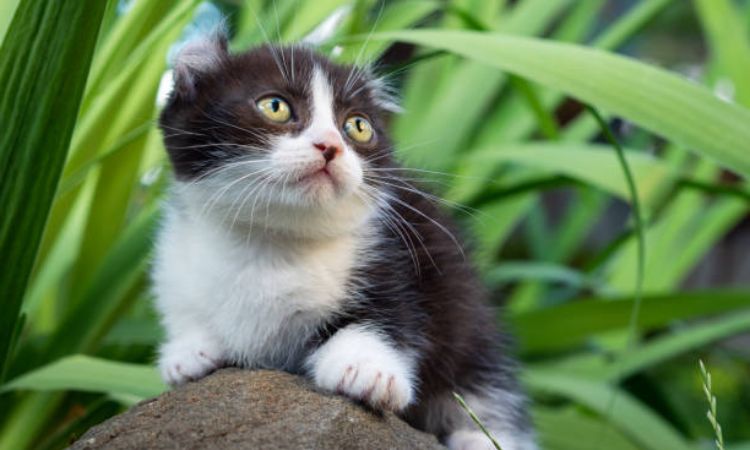
Kinkalow Temperament and Personality
Social and Affectionate
Kinkalows are incredibly social cats, eager to form strong bonds with their human families. They love to be involved in daily activities and will happily follow you from room to room, always wanting to be where the action is. They are people-oriented and often display a natural attachment to their owners.
Unlike some breeds that can be more independent, the Kinkalow thrives on attention and affection. They’ll seek out your lap or settle beside you, content to simply be in your company. This affectionate nature makes them excellent companions for families, singles, and older adults alike.
Playful and Active
While Kinkalows have a sweet and cuddly disposition, they are also highly playful. Their curiosity and love for exploration make them incredibly active, and they will eagerly chase after toys, climb to high spots, and engage in interactive games with their owners.
Though they are small, they have plenty of energy and a kitten-like playfulness that persists throughout their lives. Kinkalows enjoy fetch and other active games, as well as puzzle toys that challenge their minds. They may even surprise you with their agility, despite their short legs, performing feats of climbing and jumping that would rival other cats with longer limbs.
Intelligent and Curious
Kinkalows are not only playful but also smart. Their intelligence drives their curiosity, and they often want to explore every nook and cranny of their environment. This makes them particularly engaging cats, as they are always interested in discovering new things, whether it’s a new toy, a person, or a hidden space in the house.
Because of their intelligence, Kinkalows are quite trainable and may even learn tricks or commands with some patience and consistency. They are also very observant, so they may quickly pick up on routines or habits within the household.
Friendly and Adaptable
One of the standout traits of the Kinkalow is its friendly nature. These cats are generally welcoming to new people and other animals, making them suitable for families with children, as well as multi-pet households. Their easygoing temperament means they typically get along with other pets, including dogs, as long as proper introductions are made.
Kinkalows are also adaptable to different living situations. Whether you live in an apartment or a house, these cats will adjust well, provided they have plenty of stimulation and human interaction. However, they do not like to be left alone for long periods, so it’s best to ensure they have some form of companionship, whether it’s another pet or a family member around.
Independent but Not Aloof
While Kinkalows are certainly affectionate and love spending time with their humans, they also have a slightly independent streak. They’re not overly clingy or needy, but they will often seek attention when they feel like it. They enjoy their personal space and are happy to entertain themselves for short periods, though they prefer the company of their family members.
This balance of independence and affection makes the Kinkalow a great choice for owners who want a cat that enjoys their presence but can also entertain itself for a little while. However, it’s important to note that too much isolation could lead to separation anxiety, so it’s best to avoid leaving them alone for extended periods.
Great with Kids and Other Pets
Kinkalows tend to be good with children, as their playful and curious nature makes them naturally engaging and fun. They are patient and gentle, but as with all pets, it’s important to teach children how to handle them properly to avoid unintentional stress.
This breed also does well with other pets, including dogs, provided they are introduced slowly and given time to adjust. Their easygoing nature and desire to interact with others help them fit well into households with multiple animals, especially those that enjoy companionship.
Health and Care of Kinkalow Cats
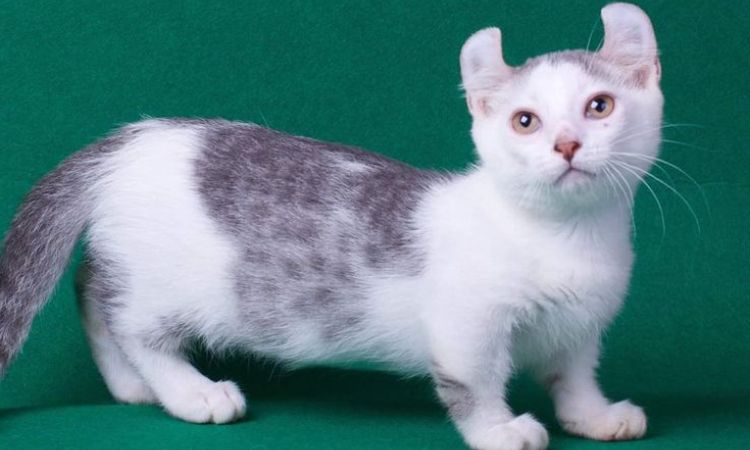
1. Grooming Needs
Proper grooming is essential to keep your Kinkalow healthy and comfortable. Here’s what you’ll need to do:
Coat Care:
- Short-haired Kinkalows require weekly brushing to remove loose fur and minimize shedding.
- Semi-longhaired Kinkalows may need brushing 2–3 times a week to prevent tangling and matting, especially around the neck, chest, and underarms.
- Regular grooming also helps maintain their coat’s smooth and shiny appearance.
Ear Care:
- The curled ears of the Kinkalow are one of their most unique features, but they do require extra attention.
- Due to the curl, their ears are more prone to wax buildup and infections. Gently clean their ears on a regular basis using an appropriate ear cleaner and a cotton ball. This will help prevent any potential infections and ensure their ears remain healthy.
Nail Trimming & Dental Hygiene:
- Just like all cats, Kinkalows need regular nail trimming to prevent overgrowth.
- Dental hygiene is also important. Regular brushing of their teeth and providing dental treats or toys can help keep their teeth and gums healthy.
2. Health Considerations
Kinkalows are generally healthy, but there are a few health considerations to be aware of due to their specific genetic background:
Spinal/Joint Issues:
- The short legs of the Kinkalow, inherited from the Munchkin breed, can cause certain spinal and joint issues over time. These include lordosis (a curvature of the spine) and osteoarthritis, which are more common in dwarf breeds.
- Weight management is crucial to prevent excess strain on their spine and joints. Keeping your Kinkalow at a healthy weight with a balanced diet and regular exercise is essential to avoid these issues.
Ear Infections:
- The distinctive curled ears are prone to collecting dirt, wax, and moisture, which can lead to ear infections if not regularly cleaned. Owners should be diligent about ear care to prevent infections and ensure that their Kinkalow’s ears stay free of debris and wax buildup.
Other Health Concerns:
- Like many small and exotic breeds, Kinkalows may also be prone to conditions related to their parent breeds, such as hyperthyroidism, kidney issues, or even a chest deformity called pectus excavatum. Regular vet checkups are essential to catch any potential issues early and to maintain a long, healthy life.
3. Nutrition and Exercise
Proper nutrition and exercise are vital for maintaining the overall health of a Kinkalow:
Nutrition:
- Kinkalows don’t have any specific dietary requirements beyond what is typical for cats. A high-quality commercial cat food that meets their nutritional needs is essential.
- Like all cats, Kinkalows are obligate carnivores, meaning they require protein-rich food to thrive. A diet consisting of high-quality meat proteins, healthy fats, and essential vitamins is ideal.
- Wet food can be a good option, as it helps with hydration and offers higher protein content. Be sure to choose foods approved by the AAFCO (Association of American Feed Control Officials) to ensure balanced nutrition.
Exercise:
- Kinkalows are active and enjoy playtime, so it’s important to engage them in regular physical and mental stimulation. Interactive toys, scratching posts, and climbing structures will help keep them active and satisfied.
- Because of their short legs, they may not jump as high as other cats, but they still enjoy climbing, playing, and running around the house. Daily exercise helps maintain a healthy weight and contributes to their overall well-being.
- Owners should aim for 20-60 minutes of play each day, providing an opportunity for both physical exercise and bonding time.
Preventing Obesity:
- Obesity can be particularly problematic for Kinkalows due to their shorter stature and shorter legs, as excess weight can place added strain on their spine and joints. Owners should monitor their Kinkalow’s weight carefully and ensure they maintain a healthy body condition. Regular play and a well-balanced diet are the best ways to prevent obesity.
Kinkalow Kittens and Price Insights
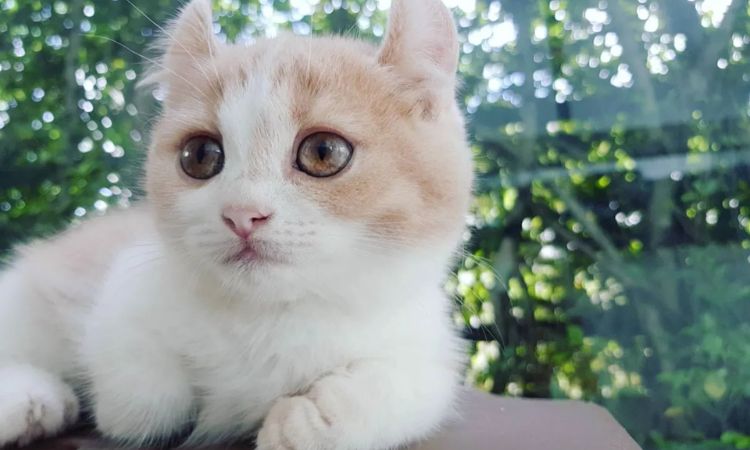
Rarity and Availability
Kinkalow kittens are extremely rare and exotic due to their hybrid origins, combining the Munchkin’s short legs with the American Curl’s curled ears. Because the breed has a small gene pool, only a limited number of reputable breeders exist. This scarcity often means waiting lists are common, and in many cases, prospective owners may need to travel or arrange shipping to acquire a kitten.
Kinkalow Cat Price Range
The rarity and experimental status of the Kinkalow contribute to its high cost.
- Typical Kitten Price: Prices generally range from $2,500 to $4,300 USD, depending on pedigree, coat color and pattern, breeder reputation, and location.
- Deposit: Breeders often require a non-refundable deposit to reserve a kitten, which can start around $700 USD or more.
- Additional Costs: Expect to budget for vaccinations, initial supplies, and shipping if acquiring a kitten from out of state, which can range from $50 to $600 USD.
Finding a Reputable Breeder
Securing a healthy Kinkalow requires careful research:
- Registered Breeders: Work with breeders registered with recognized organizations such as TICA (The International Cat Association) or The Dwarf Cat Association (TDCA).
- Health Screening: Request health records for both parent cats, including checks for joint, spinal, and ear issues common to the breed.
- Contracts and Guarantees: Review the breeder’s contract for health guarantees, return policies, and care instructions for your kitten.
The Kinkalow’s rare appearance, playful nature, and affectionate personality make it a captivating companion. Understanding their health, care needs, and costs ensures a responsible adoption, allowing these charming kittens to grow into lively, loving cats that bring joy to any home.






